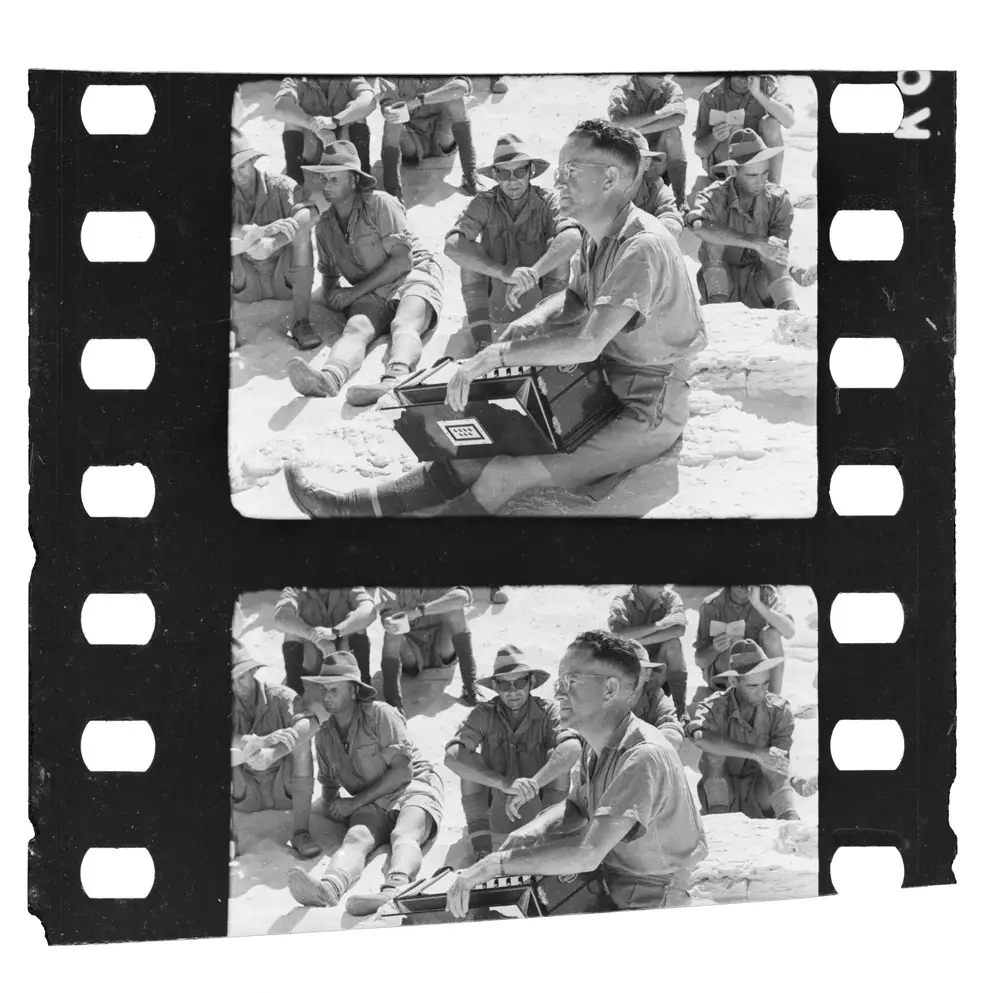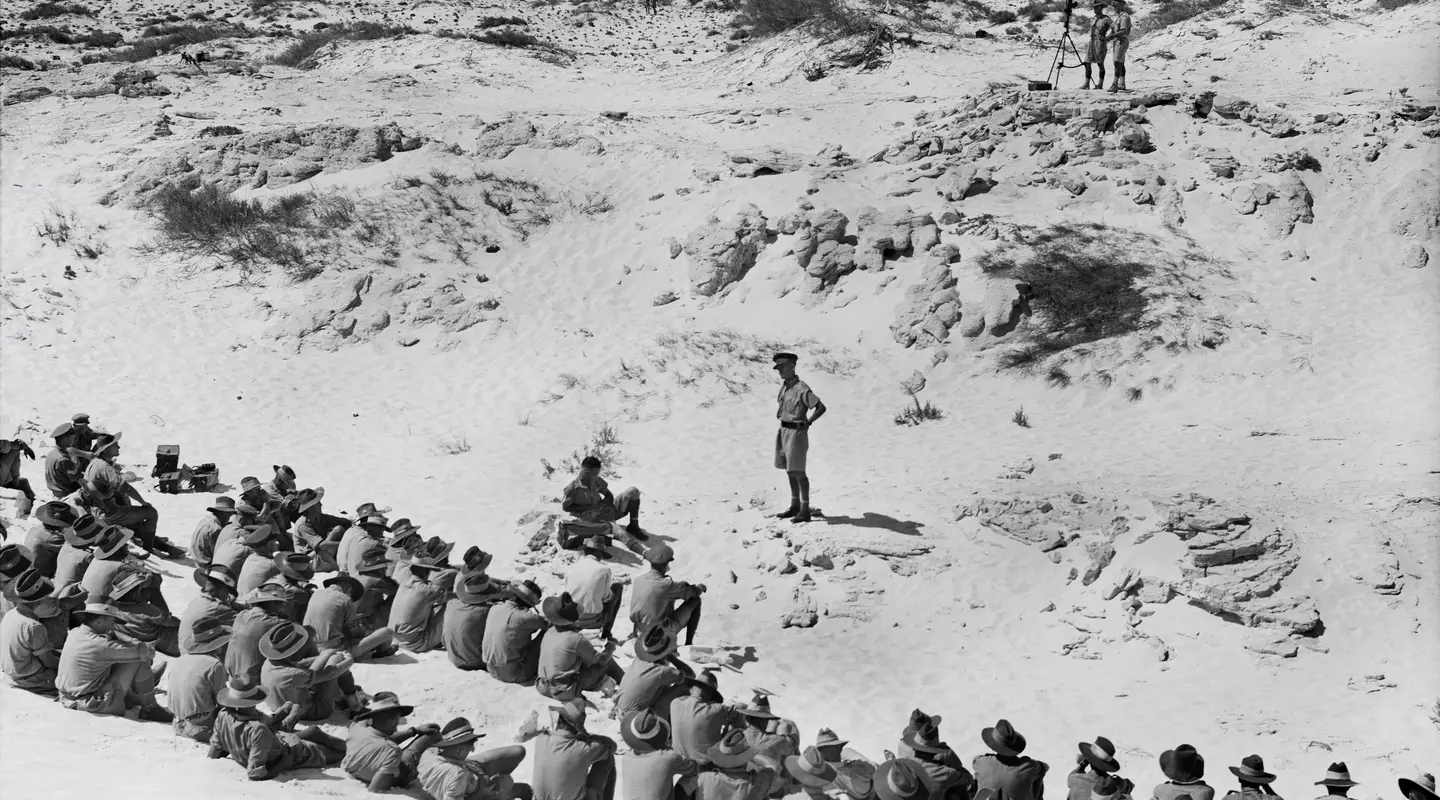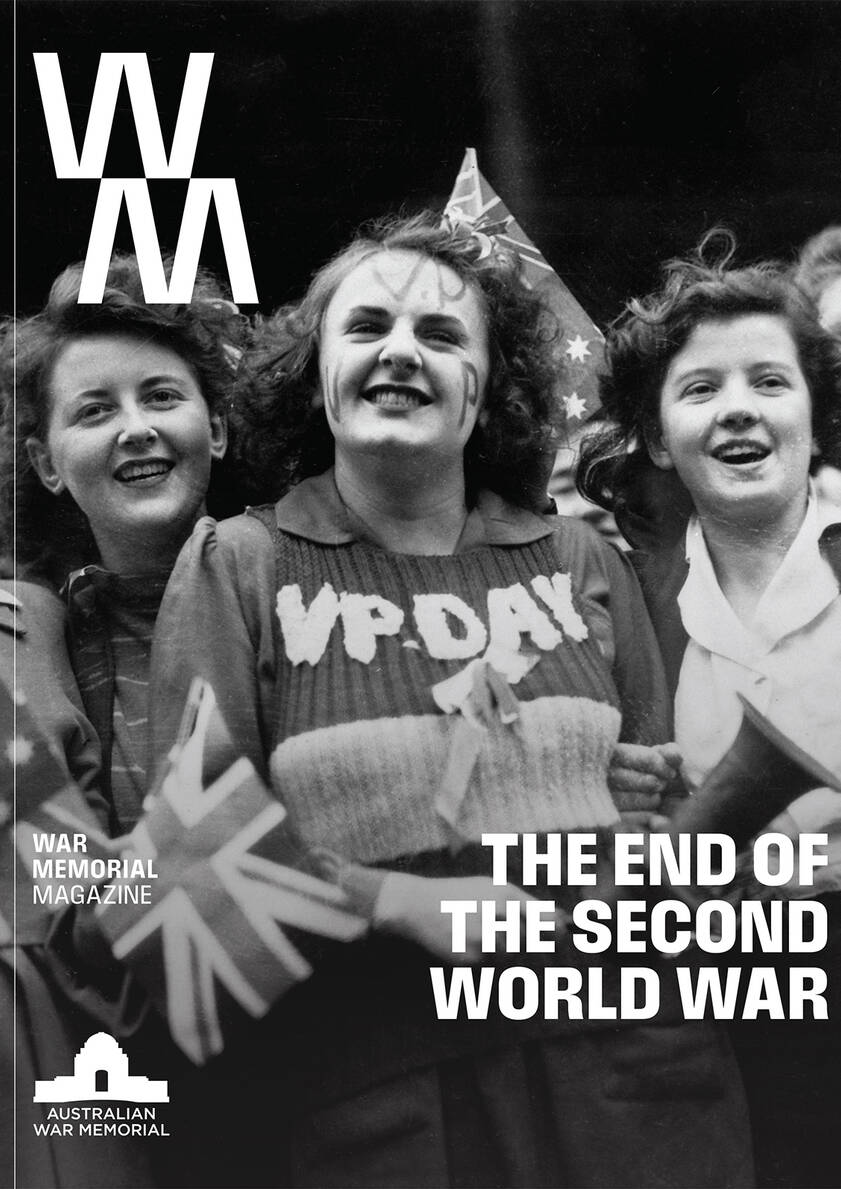From mid to late 1942, Australian forces were involved in a series of battles near El Alamein in Egypt. In a moment of respite from this fighting, though the exact date is unknown, a group of servicemen held a church service in the sand dunes.
Sometimes the footage is not the most interesting part of a film. It is the circumstances around the footage – its capture, its history, the people involved, associated ephemera and documentation – that creates a point of interest and a good story. Sermon on the Sandhills is one such film.
Sermon on the Sandhills
From mid to late 1942, Australian forces were involved in a series of battles near El Alamein in Egypt. In a moment of respite from this fighting, though the exact date is unknown, a group of servicemen held a church service in the sand dunes. Led by Salvation Army padre Commissioner Bill Tibbs, they sang hymns, prayed and listened to a sermon labelled as “one of the most impressive and sincere heard in the Middle East”.
That was the response of Department of Information (DoI) photographer and cinematographer Frank Hurley, who filmed about two minutes of silent, black and white footage (AWM F01227). He recorded a mix of sweeping panorama views of the large congregation and dramatic landscape, juxtaposed with close -up shots of individuals, including the padre reading from his Bible, a musician playing the accordion, and individual members of the audience listening intently.
In his notes, sent to the DoI and newsreel editors in Australia, Hurley was clearly impressed with the service and the potential to create a poignant film from his footage (AWM403/2/203).
“The story behind the picture is poignant with catastrophic yet glorious achievement … This sermon, given to this remnant of a battalion in the battle field area, is one of the most impressive things I have seen and listened to over here.”
Frank Hurley
Hurley had earned recognition and acclaim for his previous work, with a respected career as a polar explorer, First World War official photographer, ethnographic film maker, pictorialist photographer, and feature film cinematographer. He makes several specific suggestions about the edit, music and sound effects. For example:
“To create atmosphere. Important. All through the item should be heard the distant booming of artillery …The deep boom should give a realism.”
Unfortunately, Hurley’s vision for the final film was never realised. In Australia, Ken G. Hall from Cinesound Productions was bemoaning Hurley’s work and filming style to the DoI –
“The total footage received from Captain Hurley in the last twelve months is approximately six thousand feet. Of this, I do not think more than six or seven hundred feet has been used by either newsreel. This is a very bad proportion because as you know, Capt. Hurley cuts down his negative before it comes to Australia.” He continues that “newsreel editors are not looking for artistic camera effects but are looking for news material without definite propaganda value.”
While newsreel companies were criticising Hurley’s style and editing (and apparent burning of that which he considered imperfect), this very practice turned up several pieces of otherwise lost film re-entering the Australian War Memorial collection almost 80 years later.
 +
+
Major Colin 'Hugh' Boyd Norman MC (later Brigadier and DSO) was another attendee at the Sermon on the Sandhills (as Hurley called the church service and his imagined film). Norman features in the footage as part of the congregation. The two men obviously interacted, and at some stage, Hurley cut out and gave him a series of fragments from his nitrate film. Fourteen strips of film, of various lengths and different scenes, and one piece of annotated and signed film leader, were donated to the Memorial among Norman’s personal collection (AWM2019.185.39.1-15). There are very few examples of original fragments, deliberately removed from a reel of film, held within the Memorial’s collection. It is even rarer to have any information about the specific circumstances in which it occurred.
Hurley’s fragments, together with his notes and the associated correspondence, provide a more complete context and history for Sermon on the Sandhills, ensuring that, while not considered news worthy footage, it remains an interesting story – just not quite in the way Frank Hurley may have intended.

